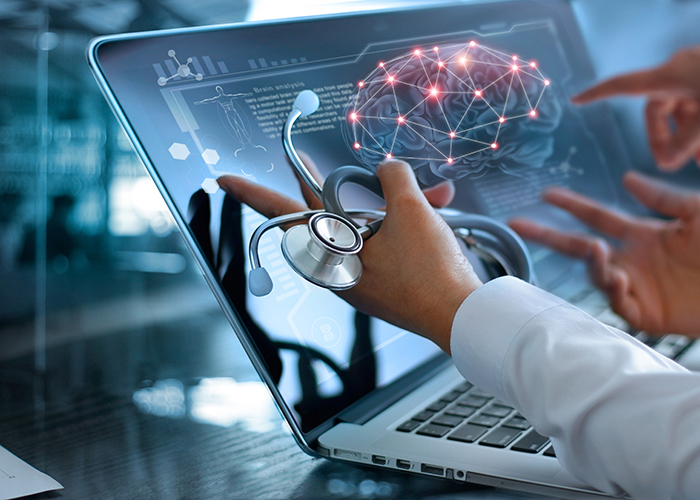Wireless Technology In the realm of healthcare, two powerful forces are converging to redefine patient care, streamline processes, and improve outcomes: Medical Technology and Wireless Technology. The amalgamation of these two domains has given rise to a new era of healthcare, where innovative solutions are driving efficiency, accessibility, and patient-centric care. In this exploration, we delve into the dynamic synergy between medical technology and wireless technology, unraveling the intricacies of this transformative partnership.
The Essence of Medical Technology
Medical technology, often referred to as “medtech,” encompasses a vast spectrum of tools, devices, and solutions designed to enhance the practice of medicine and improve patient care. From diagnostic equipment and surgical robots to wearable health trackers and telemedicine platforms, medtech spans the continuum of care, from prevention to diagnosis, treatment, and beyond.
The Pervasive Influence of Wireless Technology
On the other hand, wireless technology has permeated virtually every facet of modern life, including healthcare. Wireless networks, the Internet of Things (IoT), and mobile communication have laid the foundation for a healthcare ecosystem that thrives on real-time data exchange, remote monitoring, and seamless connectivity.
The Synergy Unveiled
1. Remote Patient Monitoring
Remote patient monitoring is a prime example of how medical technology and wireless technology synergize to benefit both patients and healthcare providers. Devices like wearable fitness trackers, continuous glucose monitors, and smartwatches equipped with health sensors allow patients to track vital signs and health metrics in real-time. This data is wirelessly transmitted to healthcare professionals, enabling proactive interventions and reducing hospital readmissions.
2. Telemedicine and Telehealth
Telemedicine platforms, empowered by wireless technology, enable healthcare providers to conduct virtual consultations with patients. This not only enhances access to care, especially in rural or underserved areas but also minimizes the risk of disease transmission during public health crises, as demonstrated during the COVID-19 pandemic.
3. IoT in Healthcare
The Internet of Things (IoT) has found a profound application in healthcare through medical technology. IoT devices such as smart inhalers for asthma management, connected pill dispensers, and RFID-enabled asset tracking systems streamline processes, improve medication adherence, and enhance patient safety.
4. Surgical Advancements
In the surgical domain, wireless technology plays a pivotal role in enhancing precision and minimizing invasiveness. Surgical robots, guided by wireless connectivity and intricate algorithms, enable surgeons to perform complex procedures with unparalleled accuracy, often through minimally invasive techniques.
5. Data-Driven Insights
The integration of medical technology and wireless technology generates vast volumes of healthcare data. Advanced analytics, powered by machine learning and artificial intelligence, sift through this data to identify trends, predict disease outbreaks, and optimize treatment plans. This data-driven approach is revolutionizing healthcare decision-making.
The Challenges and Considerations
While the synergy of medical technology and wireless technology holds immense promise, it also presents challenges and considerations:
1. Data Security
The transmission of sensitive patient data via wireless networks necessitates robust cybersecurity measures to protect patient privacy and prevent data breaches.
2. Interoperability
The seamless exchange of data between different medical devices and systems remains a challenge. Ensuring interoperability is crucial for the efficient flow of patient information.
3. Regulatory Compliance
The regulatory landscape for medical technology and wireless technology is complex and subject to change. Manufacturers and healthcare providers must stay vigilant to ensure compliance.
4. Access and Equity
While these technologies hold great promise, ensuring equitable access to care for all remains a critical concern. Addressing disparities in access is essential for healthcare’s evolution.
The Future of Healthcare
As medical technology and wireless technology continue to advance, the future of healthcare looks promising:
1. 5G Connectivity
The rollout of 5G networks promises ultra-fast, low-latency wireless connectivity, opening new possibilities for remote surgery, augmented reality-assisted procedures, and real-time patient monitoring.
2. Artificial Intelligence
AI-driven diagnostics and predictive analytics will become more precise, assisting healthcare providers in making faster and more accurate clinical decisions.
3. Wearable Health Tech
Wearable devices will evolve to become even more integrated into daily life, continuously monitoring health and providing early warning signs of potential health issues.
4. Global Health Equity
Efforts to bridge healthcare disparities through technology will continue to expand, ensuring that all communities benefit from advancements in medical and wireless technology.
Conclusion
The fusion of medical technology and wireless technology represents a seismic shift in healthcare. It empowers patients, equips healthcare providers with real-time data and insights, and paves the way for a more patient-centric, data-driven, and efficient healthcare system. As these technologies continue to evolve, the possibilities for enhancing patient care, expanding access, and improving outcomes are boundless. The future of healthcare is wireless, connected, and profoundly transformative.

